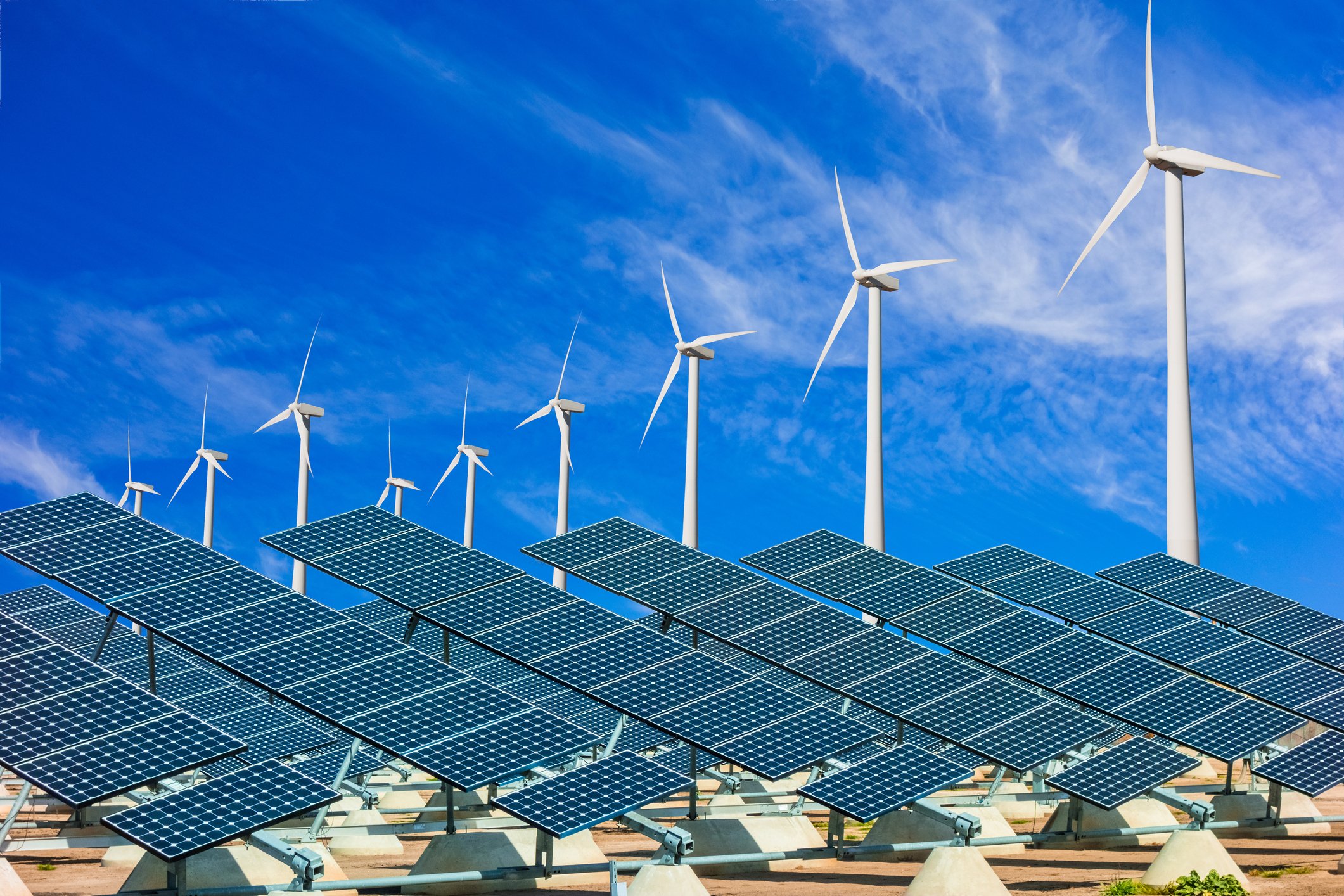Utility Duke Energy (DUK +0.59%) reported 2019 earnings not too long ago. They were solid, coming in a bit above the midpoint of its guidance range. Operationally it was a good year, too, with both reliability and customer satisfaction increasing.
It also offered up an updated long-term outlook for its capital spending plans. Once again, it was good news. Here's a quick rundown of why this is important and how the company is planning to spend its shareholders' money.
Spend more, make more
As a largely regulated utility, Duke Energy is granted a monopoly in the regions it serves. In exchange for this, the government reserves the right to approve the rates that the company can charge its customers. That makes sense, given that an electric utility with a monopoly could charge whatever it wanted for electricity and get away with it, if there wasn't someone to restrain it.

Image source: Getty Images.
The upshot here is that Duke has to prove to regulators that the rates it charges, including any increases, are justified. Generally speaking, utilities do this by ensuring reliable service, expanding to meet any new demand, and increasingly, keeping their facilities as environmentally friendly as possible. All of these things require spending money. So when trying to support rate requests in front of regulators, utilities like Duke generally highlight all of the spending they wish to do.
If that spending seems reasonable to regulators, then rate cases are relatively smooth. If the spending doesn't look like it's in line with the rates being requested, or there are reliability issues, then there's more back and forth between the utility and the regulator. It can get pretty ugly at times. Duke, luckily, has historically had decent relationships with the various regulators with which it deals.
The big plans
When Duke announced 2019 earnings, it also came out with a new spending plan. The previous plan ran from 2019 to 2023, and amounted to $50 billion. The company typically looks out five years when creating capital investment plans for public view. Roughly 78% of the spending in that plan was earmarked for its electric assets, 15% for natural gas (utility and midstream assets combined), 5% for contracted renewable power, and the rest for "other."
The new plan runs from 2020 to 2024. The total value is $56 billion, a huge 12% increase. Of this plan, 81% is being put toward electric utilities, 14% to natural gas, and 3% to renewable power. The rest, again, is "other."
Digging into these numbers a little bit, Duke is increasing its dollar value spending on its core electric utility business by roughly 16%. (That's a sizable uptick, but also the most likely to appease regulators.) Spending on the natural gas side is heading higher by around 4.5%. However, Duke plans to pull back in the renewable power space, dropping its dollar value spend there by nearly a third.
That last fact probably won't please investors with an ESG bent, but it isn't as bad as it sounds. This business is basically building renewable power assets in which the power is sold to other companies under long-term contracts. Duke has to balance the construction and operating costs it will incur against the rates it will be paid and, notably, the risk that the customer eventually ends up not paying.
Peer The Southern Company has noted that the risk/return profile in this space isn't as good as it was just a few years ago. It makes sense that Duke would want to pull back here, too. And Duke's spending for its own electric utilities will include renewable power, so it hasn't stopped spending on clean energy. It has merely taken a more conservative approach in a business where risk appears to be creeping higher.
The big news hidden under the spending numbers here is that customer growth is a key driver. That's showing up on both the electric and gas side of things, and means that Duke pretty much has to spend more money to ensure it's able to reliably supply its customer base with energy.
Regulators tend to approve of spending in situations like this. It is also spending to ensure its electric assets can stand up to adverse weather conditions, like hurricanes. That's another reliability issue that regulators tend to find appealing. And it is spending on solar power in Florida, which hits the clean energy zeitgeist that should keep regulators, customers, and environmentalists happy.
A solid plan
There are obviously lots of smaller details involved in a $56 billion, five-year spending plan. But overall, Duke appears to have a good path laid out in support of its 4% to 6% annual earnings growth goal between 2020 and 2024.
It seems likely that regulators will be largely supportive. Dividends, meanwhile, are likely to increase in line with earnings, or perhaps just a touch below, supporting the long-term buying power of the current 3.9% dividend yield. That's toward the high end in the utility sector today, noting that Vanguard Utilities Index ETF, a rough proxy for the utility sector, has a yield of just 2.7%.
Duke is not an exciting company -- it is a slow and steady tortoise that dividend-focused investors can rely on to provide a steady income stream. Its updated spending plans, including the plan to pull back in its contracted renewable power business, show that this hasn't changed.
If you are looking for a high-yield dividend stock today, Duke, while not exactly cheap, is still a solid option.







